Listen to the audio story:
—–
If it seemed like there were even more political advertisements than usual leading up to this year’s election, you can partially thank the Citizens United v. Federal Election Commission ruling from the beginning of the year.
The Citizens United case determined that corporations and unions can spend as much as they want on political advertisements. The United States Supreme Court ruled that this type of spending is a protected form of free speech under the First Amendment.
At this point, it is not entirely clear how much of the outside spending in this election cycle came from corporations. Eugene Volokh, a law professor at University of California, Los Angeles said the court case could definitely play a role in increased spending, and thus more political advertisements being broadcast.
One thing he thinks people are forgetting about the ruling is that it includes unions as well as corporations.
“Many people think of Citizens United as just a corporate speech case, but it applies every bit as much to unions,” Volokh said. “Before Citizens United, in about half the states, both corporations and unions were restricted from spending their money in order to express their views about candidates. Now, both corporations and unions are free to do so.”
But the unlimited spending is just one side of the equation. Transparency is another issue entirely.
In many states, there are loopholes when it comes to disclosing who paid for an advertisement. Other states had stricter transparency laws, but violations are often under-enforced.
Richard Hasen is a law professor at Loyola Law School in Los Angeles. He sees this lack of transparency as a big potential problem for the future.
“If we go into the 2012 election without adequate disclosure, we’re going to be in a tough situation,” Hasen said. “Voters rely upon information about who’s backing candidates and measures. If you know that a candidate is backed by the NRA or the Sierra Club, that gives you a lot of information about whether or not it’s a candidate you might want to back. Going forward, if we don’t have that kind of information on a federal level, it will be very hard for voters to discern who is backing what candidates.”
And going back to the unions, Volokh sees another troubling situation.
“A possible downside of the spending that is indeed there is the possibility that politicians will feel indebted to those groups who independently spent in order to support them,” Volokh said.
Despite the uncertainties about the exact role corporations and unions will play in the election of candidates, one thing is clear: outsider spending on political advertisemens is here to stay.









 The midterm elections marked a new era in the governing of the state of California. In South Los Angeles, that change was not ushered in at glamorous campaign parties but instead in quiet lines at the area’s hundreds of polling places.
The midterm elections marked a new era in the governing of the state of California. In South Los Angeles, that change was not ushered in at glamorous campaign parties but instead in quiet lines at the area’s hundreds of polling places.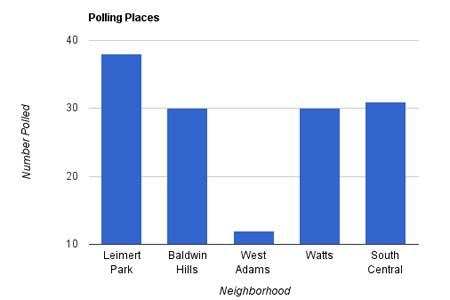
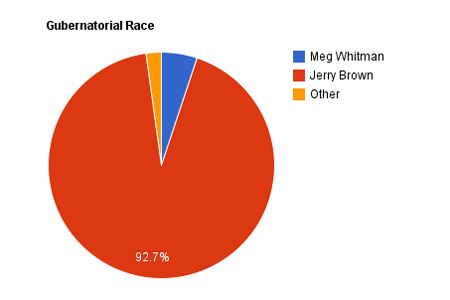
 A similar breakdown was seen in the Senate race between Barbara Boxer and Carly Fiorina. Boxer, who has already served three terms in the Senate, won 91 percent of the voters polled in South Los Angeles.
A similar breakdown was seen in the Senate race between Barbara Boxer and Carly Fiorina. Boxer, who has already served three terms in the Senate, won 91 percent of the voters polled in South Los Angeles.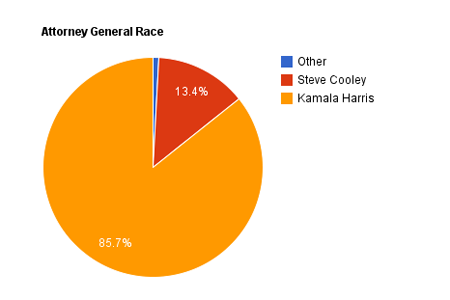
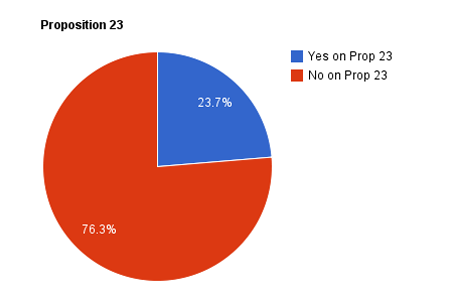 The Proposition races proved more heated. Proposition 23 suspends Assembly Bill 32, which enacts caps on carbon emissions, in favoring of lowering the unemployment rate.
The Proposition races proved more heated. Proposition 23 suspends Assembly Bill 32, which enacts caps on carbon emissions, in favoring of lowering the unemployment rate.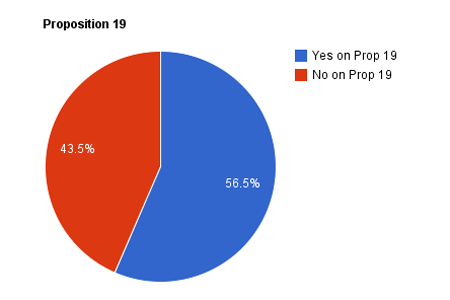 The much-debated Proposition 19 saw a smaller margin. In the South Los Angeles Report survey, a slight majority (56.5 percent) voted “yes” on Proposition 19.
The much-debated Proposition 19 saw a smaller margin. In the South Los Angeles Report survey, a slight majority (56.5 percent) voted “yes” on Proposition 19.




